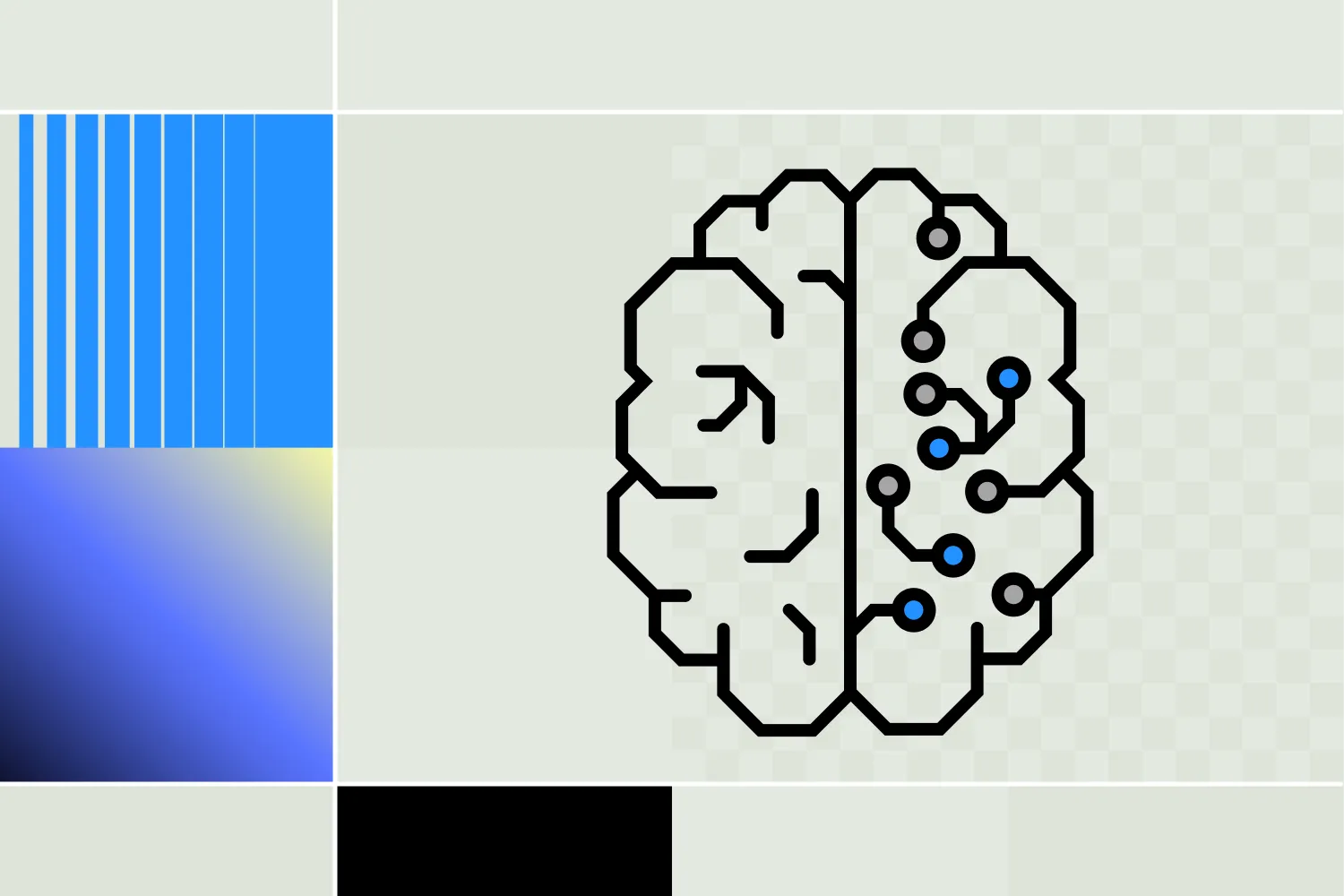- Human-in-the-loop (HITL) combines human oversight with AI systems to improve accuracy.
- Humans intervene by annotating data, reviewing AI outputs, handling escalations, and guiding model improvements.
- HITL boosts reliability, mitigates bias, enables continuous learning, and makes AI systems more transparent.
- Use cases span self-driving cars, retail bots, finance risk checks, and healthcare decisions.
If you’re thinking of improving your business with AI, you’re not alone. With AI chatbots being the fastest growing communication channel, they’re no longer a luxury– they’re an expectation.
But giving up that control can feel kind of scary. Offloading crucial operations to a so-called ‘black box algorithm’ can feel like a big leap of faith.
And it is, which is why businesses rely on human intervention to steer AI. Nearly all AI agent frameworks include human-in-the-loop– human oversight over AI operations.

In this article, I’ll explain what it is, how it works, and give some examples of how human intervention is being used daily to give users more control over AI chatbots and agents.
What is human-in-the-loop?
Human-in-the-loop (HITL) is a collaborative approach to AI where human input is used to improve or extend the capabilities of AI. This can be in the form of human-annotated data, corrected model outputs, or having humans perform complete tasks in cases where the AI is uncertain or deemed ineffective.
The term can be a little ambiguous. It technically refers to any human involvement in the lifecycle of AI applications– from data labelling and model evaluation to active learning and escalations.
In practice, when AI providers offer HITL functionality, it generally means oversight over AI outputs: the opportunity to review responses and escalate chatbot interactions to human agents.
How are humans “in the loop” in AI?
A well-oiled AI pipeline will have several entry-points for humans.
AI is trained to uncover patterns in its training data, and then generalize these patterns to new, unseen data. We get to decide what data the model sees, but not which patterns it draws from the data.
At every step in the process– data collection, training, and deployment– it’s up to people to make sure the model is working as expected.
Depending on where and how this human intervention occurs, it can fall under any of the following categories:
Providing Feedback for Continuous Learning
You know when ChatGPT asks you which of two responses is better? Feedback can be treated as new data for the model to train on.

Feedback doesn’t have to be explicit, though.
Think of social media recommendations. A predictive model is constantly suggesting content based on your history. As you use the platform, your choice of content is used as data to continuously train the recommendation model.
In this case, you’re the human. And in using the app, you’re serving as a guide for future recommendations.
This is where it comes full-circle: the model is trained on data, users interact with the model, and these interactions in turn create data which the model is once again trained on.
Handling Escalated Situations
HITL isn’t necessarily about improving the system. Sometimes it’s about deferring difficult cases to humans.
Consider a customer support chatbot. It offloads a good chunk of your team’s work by answering 95% of questions clearly, concisely, and accurately.
But then there’s that 5%.
Some cases will be hyper-specific or obscure enough that they’re just out of the AI’s wheelhouse. Although human intervention doesn’t improve the model in this case, this is a great example of the way humans and machine learning can work symbiotically.
Annotating Data for Training
Technically speaking, pretty much all machine learning is built with a HITL mechanism. For that reason, when we talk about HITL, we’re mostly referring to the above categories.
That said, I would be remiss if I didn’t call attention to the human labor and expertise in the machine learning loop.
Data is the backbone of AI, and it relies on humans. AI models are trained to predict labels based on input data. Labels are the expected output of the AI, and it’s up to us humans to make them.
Some examples of human labeling include:
- Hand-writing responses to prompts to train large language models (LLMs)
- Transcribing audio files for speech recognition models.
- Annotating objects in images for object detection models
- Marking sample emails as spam-or-not-spam for an email client’s spam detector
Evaluating Model Performance
The lion’s share of the time spent building AI models is figuring out how to make them better. While there are endless metrics you can compute, like precision and recall, it takes expert insight to figure out just how the model is working, and more importantly, what to do about it.
For instance a researcher might notice the model does great at identifying images of dogs, but not hot dogs. That can generally be fixed by adding or diversifying the pictures of hot dogs.
Sometimes a chat model will struggle with remembering information from previous messages. A researcher will generally tackle this by making low-level adjustments to the model’s architecture or generation method.
The Benefits of Human-in-the-Loop AI
AI may be incredibly efficient and effective at recognizing subtle patterns, but people are smart.
HITL is about combining a human level of nuance with the efficiency of AI workflow automation so that responses are tailored to the experience that users and providers are looking for.
1. Accuracy and Reliability
This one’s a no brainer. What’s better than plain AI? AI that’s been corrected.
Not only is it optimized to tackle edge cases but it’s reliable in the sense that users know outputs will continuously be reviewed and improved on.

2. Bias Mitigation
Data is imperfect, and model outputs will reflect that. Bias– skewing towards certain outputs over others– is a problem across machine learning and AI.
Things like racially charged image generation, or determining job qualification by gender are examples of the way AI reflects biases present in the training data.
HITL lets people flag these issues and steer the model towards fairer outcomes.
3. Continuous Improvement and Adaptability
Training isn’t over just because a model is in production. HITL lets the model continue to train on new data to better generalize across unseen cases.
For example, editing generated text or following users’ content selections offers more pieces of data that the model can use to improve.
But it’s not enough for a model to improve; it should also change.
It’s easy to take for granted the ways we’re adapting to an ever-changing world. With AI, this isn’t a given. HITL combines expertise and nuanced judgement to keep a model’s output aligned with the times.
4. Transparency and Trust
Involving humans makes the AI’s decisions more transparent. With people correcting outputs or resolving low-certainty cases, users can be reassured that they’re interacting with a sensible algorithm.
It keeps us in control of the AI, and not the other way around.
Use Cases of Human-in-the-Loop
1. Self-driving

With a market value projected to reach USD 3.9 trillion over the next decade, self-driving might just be the next big frontier in AI. It leverages object detection models and moment-by-moment decision making to simulate a person’s driving.
But for something so hands-off, it relies pretty heavily on humans. Models are constantly observing human driving patterns, and comparing their decision making against its own predictions.
2. Retail
A retail chatbot is a great way to automate customer interactions while still offering a personalized experience. HITL lets you keep that experience smooth and aligned with your business. For example, you could:
- Review and correct the bot’s product recommendations
- Have the customer talk through their basic needs before dispatching to a human agent
3. Finance
Finance chatbots are a great way to dovetail between AI automation and human expertise.
Fraud detection systems are great at picking out suspicious activities in transactions. But not all suspicious activity is nefarious, and you don’t want your card canceled every time you switch up your coffee order.
HITL can defer low-certainty, low-risk cases to humans.
Loan risk assessment is another area where AI excels– it’s great at calculating probabilities across all sorts of seemingly unrelated data. That data will almost definitely include some bias, though.
Maintaining fairness and mitigating bias often needs the help of a real person.
4. Healthcare

The reddit user whose life was saved by Claude will be the first to champion the potential for AI in healthcare.
Medical AI chatbots have showcased some of its potential, but it goes beyond that: AI can help determine a diagnosis based on an MRI reading, or suggest follow-ups based on test results. But I’m not ready to forgo doctors.
HITL offers the best of both worlds: catching cases doctors might have missed, while still allowing them to make the final call.
Use Human-Augmented AI Today
Botpress has thousands of bots deployed with seamless human oversight, and it's the most flexible AI agent platform on the market.
Botpress comes with an HITL integration, visual drag-and-drop builder, and deployment across all popular communication channels (including Slack, Telegram, WhatsApp, web), so using AI doesn’t mean giving up your personal touch.
Start building today. It’s free.
FAQs
How do I know if my AI system needs human-in-the-loop involvement?
Your AI system likely needs human-in-the-loop involvement if it handles high-stakes decisions, frequently encounters ambiguous or rare situations, risks producing biased or harmful outputs, or operates in areas where absolute accuracy and human judgment are essential for compliance or customer trust.
Can human-in-the-loop be used in non-technical business processes, or only in AI models?
Human-in-the-loop can be used in non-technical business processes like reviewing customer complaints or moderating content, because it means inserting human judgment into any automated workflow where machine decisions alone might be insufficient.
Does using human-in-the-loop mean my AI system is less advanced?
Using human-in-the-loop doesn’t mean your AI system is less advanced. It shows you’re prioritizing safety and fairness by combining AI’s speed and pattern recognition with human judgment for nuanced decisions, which is often essential.
Is human-in-the-loop AI cost-effective for small businesses, or only for large enterprises?
Human-in-the-loop AI is increasingly cost-effective for small businesses because modern tools allow you to selectively involve humans only for tricky cases, minimizing labor costs while still improving accuracy and trust without needing a large workforce.
How much does it cost to add human-in-the-loop processes to an AI system?
Adding human-in-the-loop processes can cost anywhere from minimal — if you use in-house staff occasionally — to significant, running into hundreds or thousands of dollars monthly if you require dedicated reviewers or specialized contractors, with costs driven largely by the volume and complexity of the tasks humans must handle.





.webp)
